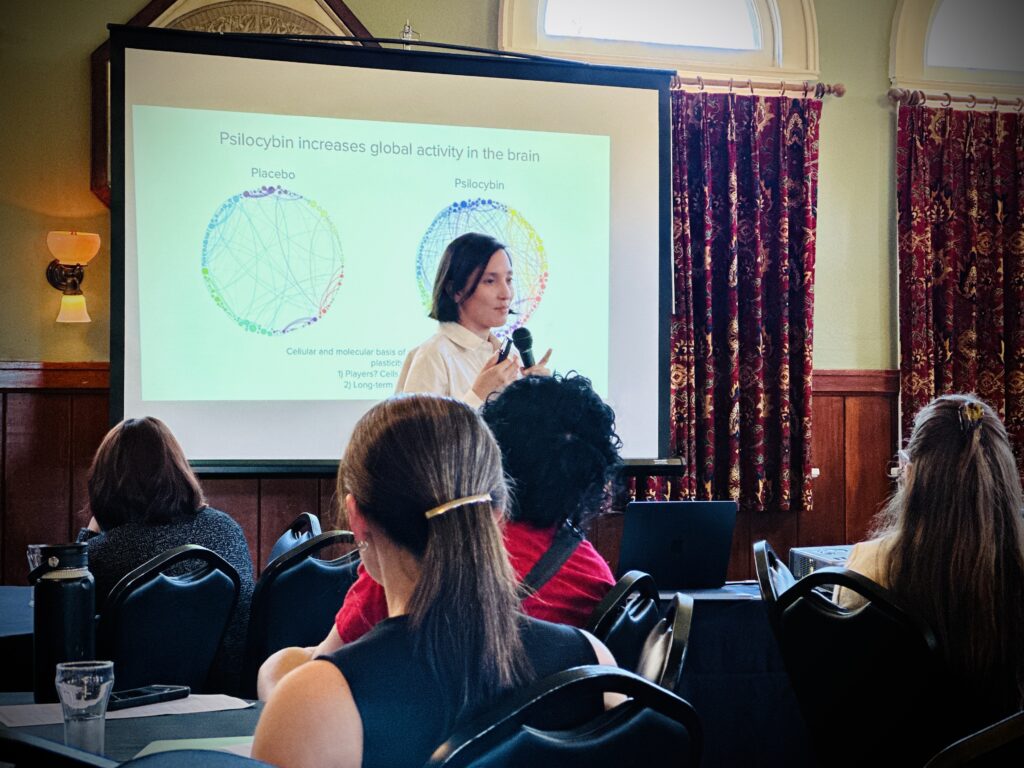Our Oregon/Southwest Washington Society for Neuroscience Chapter Meeting is BACK!
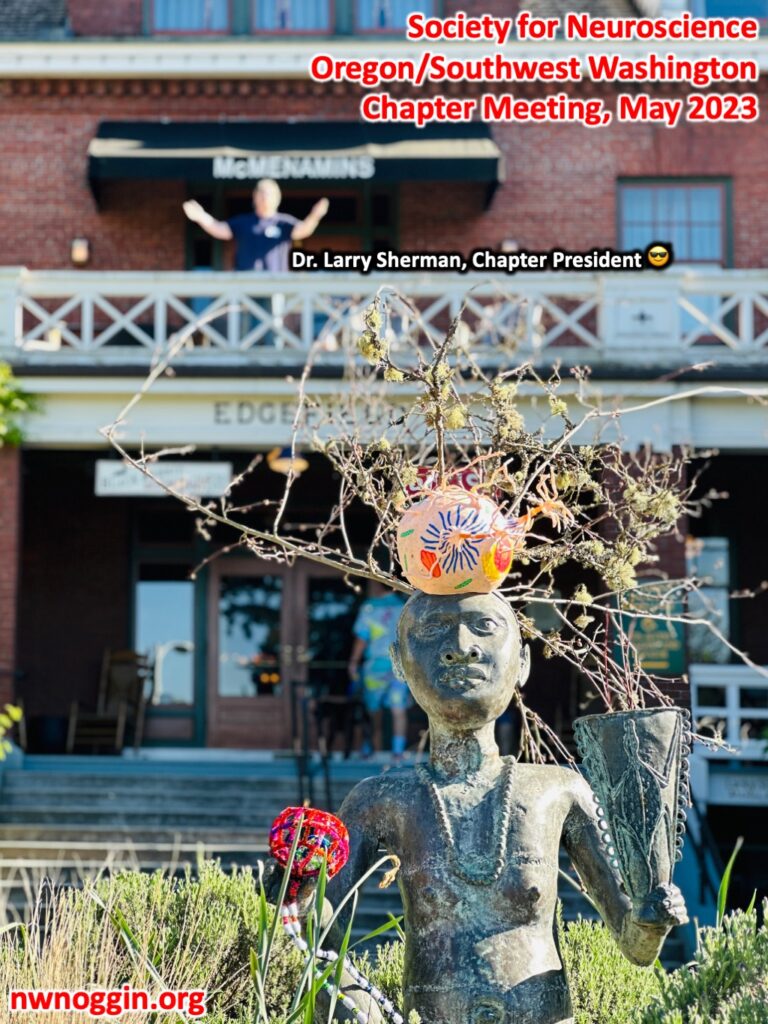
We happily returned to the McMenamin’s Edgefield for two days of in person research discussions, poster presentations, and a deep dive into the need for more accessible community engagement, participation and outreach.
LEARN MORE: Northwest Noggin @ Society for Neuroscience
PSYCHEDELIC FRIDAY
Friday focused on the neuroscience of psychedelics, and how these substances, many with rich, extensive histories of indigenous use, can powerfully alter our perception, cognition and behavior.
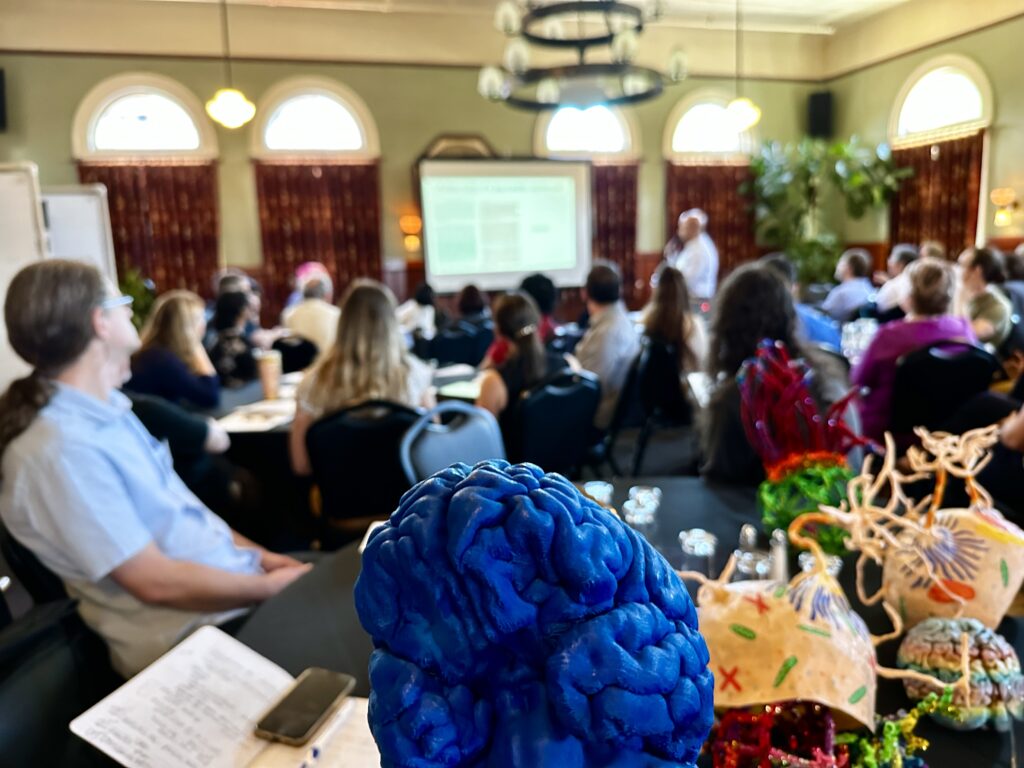
Psychedelics are also promising treatments for disorders of mental health.
“…psychedelic compounds such as LSD, DMT, and DOI increase dendritic arbor complexity, promote dendritic spine growth, and stimulate synapse formation. These cellular effects…highlight the potential of psychedelics for treating depression and related disorders…”
— Calvin Ly et al
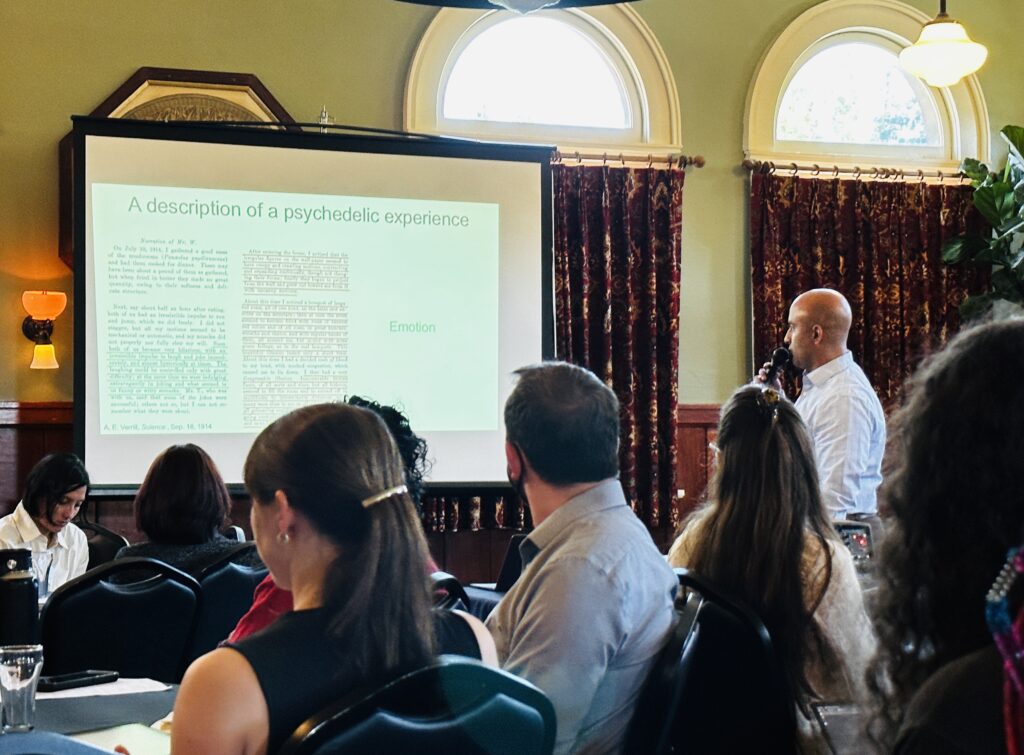
LEARN MORE: Psychedelics Promote Structural and Functional Neural Plasticity
LEARN MORE: The Therapeutic Potential of Psychedelic Drugs: Past, Present, and Future
LEARN MORE: Biochemical Mechanisms Underlying Psychedelic-Induced Neuroplasticity
LEARN MORE: A less self-centered and more creative life
LEARN MORE: Psychedelic Portland
Psychedelics available for treatment in Oregon
Psilocybe mushrooms became a legally available treatment in Oregon (in limited therapeutic settings) after voters passed Ballot Measure 109 in 2020, permitting state regulation of manufacturing, transportation, delivery, sale, and purchase of psilocybin products and the provision of psilocybin services.

LEARN MORE: Oregon Psilocybin Services Overview
LEARN MORE: Adults Can Now Use Magic Mushrooms With Supervision in Oregon
LEARN MORE: Oregon approves final link in legal psychedelic mushroom pipeline
LEARN MORE: Psilocybin 101: What to know about Oregon’s psilocybin services
LEARN MORE: How to become a licensed psilocybin manufacturer in Oregon
LEARN MORE: Kim Hamblin Art
Yet for the U.S. federal government, most psychedelic substances remain Illegal.
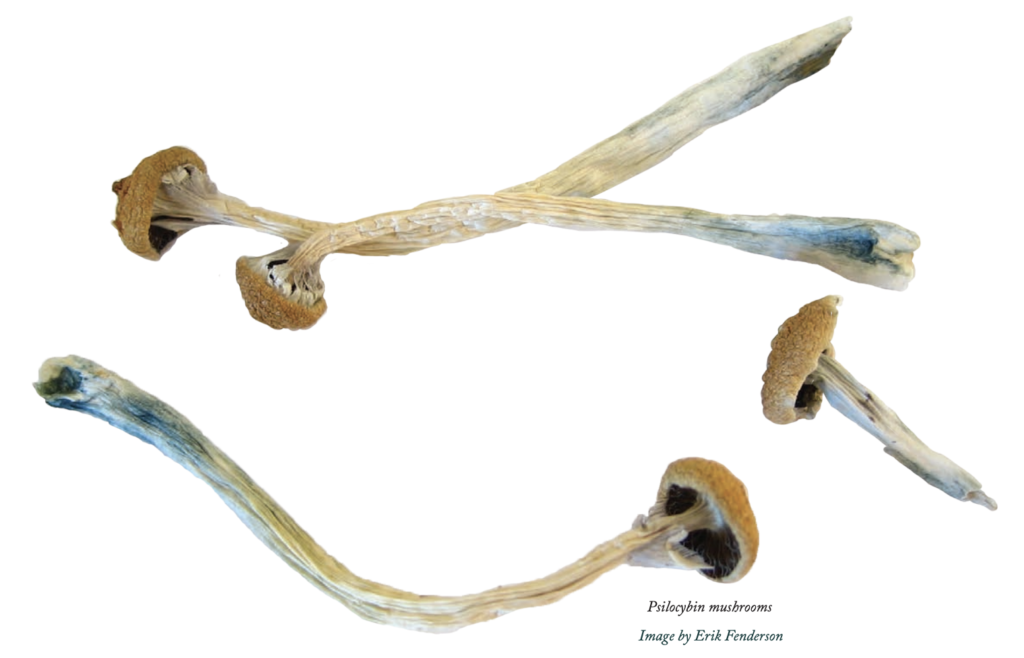
LEARN MORE: Drug Fact Sheet Psilocybin
The Drug Enforcement Agency (DEA) still considers psilocybin (and psilocin, the psychoactive chemical that psilocybin is converted into when consumed) a Schedule 1 substance, with “a high potential for abuse, no currently accepted medical use in treatment…and a lack of accepted safety for use under medical supervision.”

LEARN MORE: Drug Scheduling
None of that is true. But it does make it harder to do research on promising substances.
LEARN MORE: The Therapeutic Potential of Psilocybin
LEARN MORE: Psychedelic Mushrooms in the USA: Knowledge, Patterns of Use, and Association With Health Outcomes
LEARN MORE: An ethical exploration of barriers to research on controlled drugs
LEARN MORE: Psychedelic therapy: a roadmap for wider acceptance and utilization
LEARN MORE: Psychedelics: Where we are now, why we got here, what we must do
Because of federal restrictions, we learned at SfN, NIH-funded researchers often use DOI, a synthetic psychedelic that is currently not scheduled by the DEA.
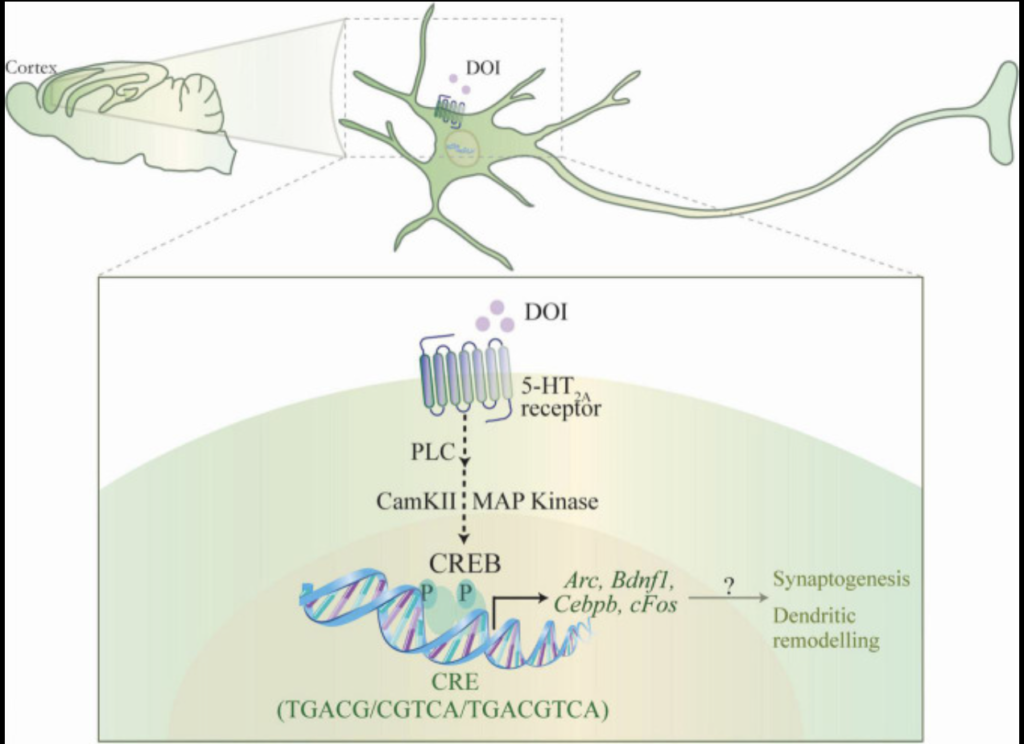
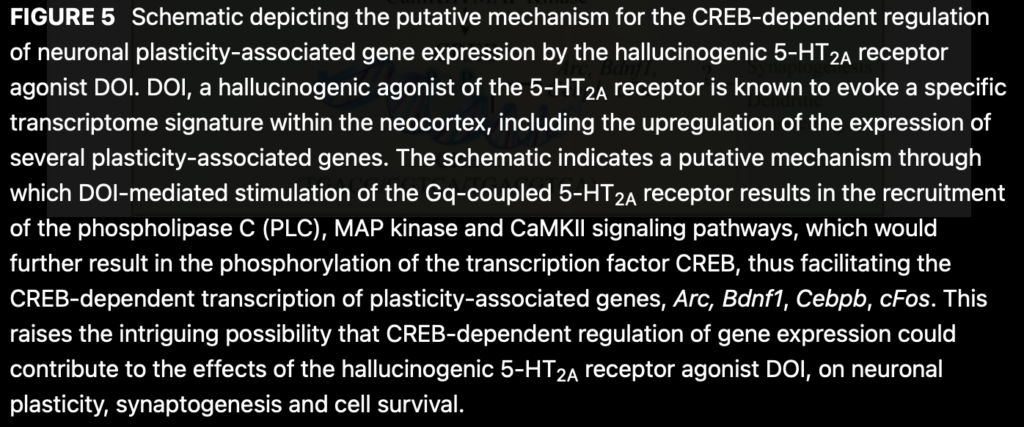
Psychedelics have a long history of use
Our first Meeting speaker was Dr. Andrea Gomez, an Assistant Professor of Molecular and Cell Biology at the University of California Berkeley. Dr. Gomez is a Chicano and Laguna Pueblo Native who emphasized the need to integrate indigenous knowledge into research.
“These compounds profoundly change the way people feel and behave long after any exposure to the medicine…I think that understanding how psychedelics change the brain can give us a window into how we can manipulate the brain in other ways— including how to treat neurological diseases that impact learning and memory.”
— Dr. Andrea Gomez
LEARN MORE: The Gomez Lab
LEARN MORE: Bringing Indigenous Knowledge to Neuroscience
LEARN MORE: How to fold Indigenous ethics into psychedelics studies
LEARN MORE: Ethical principles of traditional Indigenous medicine to guide western psychedelic research and practice
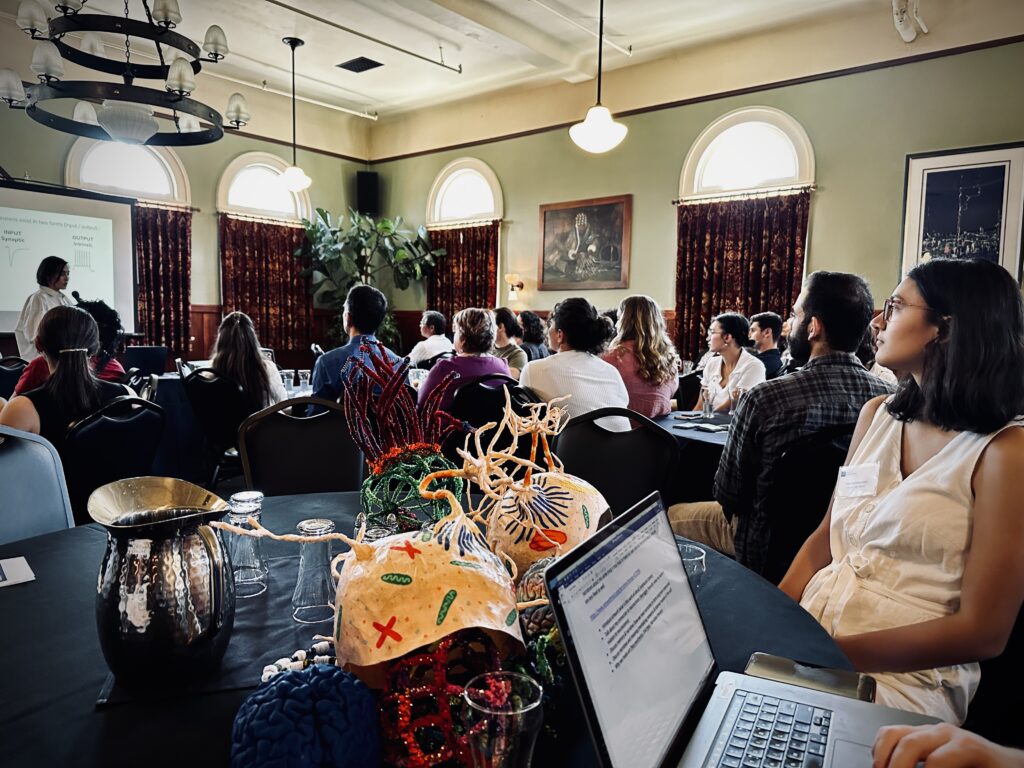
Messy drugs
It was fascinating to see how “messy” many psychedelic substances are in terms of their receptor activity.
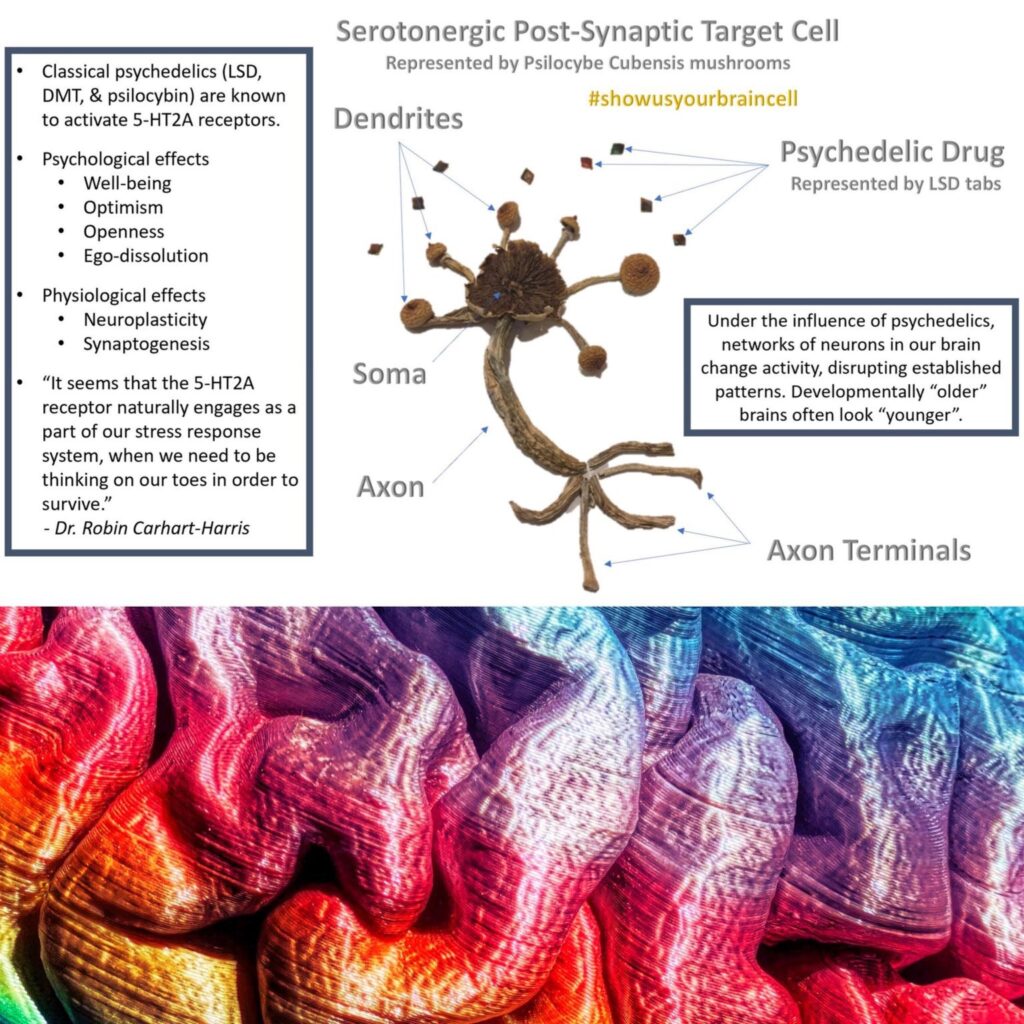
While psychedelic effects are linked to agonist (or partial agonist) action at one subtype of serotonin receptor (5-HT2A), these drugs also affect receptors for other neurotransmitters, including dopamine and norepinephrine. In contrast, THC (a psychoactive cannabinoid found in cannabis) is quite selective for agonist activity at cannabinoid receptors alone.
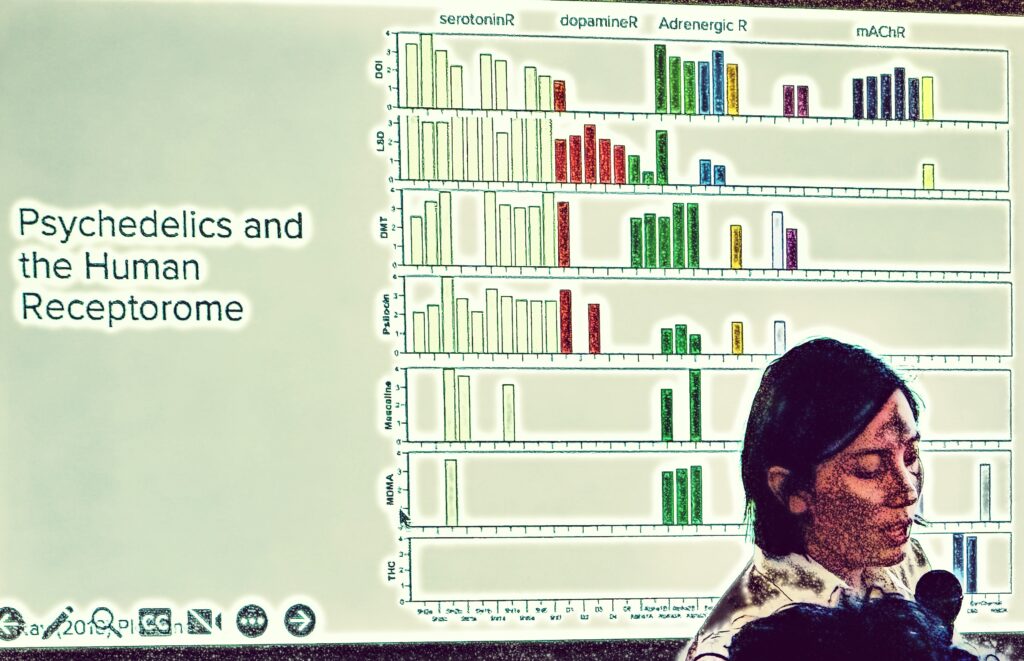
“The thirty-five (psychedelic) drugs of the study have very diverse patterns of interaction with different classes of receptors, emphasizing eighteen different receptors. This diversity of receptor interaction may underlie the qualitative diversity of these drugs.”
— Thomas Ray
LEARN MORE: Psychedelics and the Human Receptorome
LEARN MORE: Hallucinogens and Serotonin 5-HT2A Receptor-Mediated Signaling Pathways
LEARN MORE: Psychedelics
We gained more insight from Dr. Atheir Abbas at OHSU, who further explained the synaptic and cellular mechanisms of psychedelic drug action and from Dr. Luca Mazzucato at the University of Oregon, who dove into compelling research on serotonergic modulation from the many active labs in Eugene.
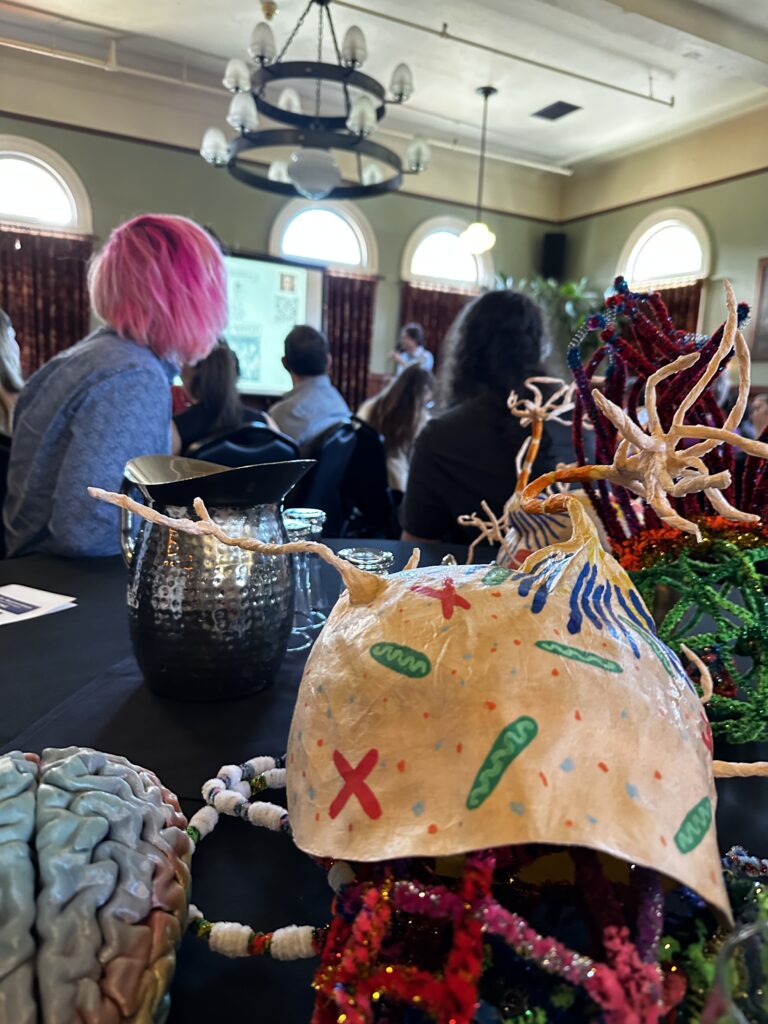
The University of Oregon recently inaugurated a new undergraduate Neuroscience major! Though Portland State University does offer an interdisciplinary neuroscience minor, we wish we had similar institutional support for the many, many undergraduates and community members interested in this growing and essential field.
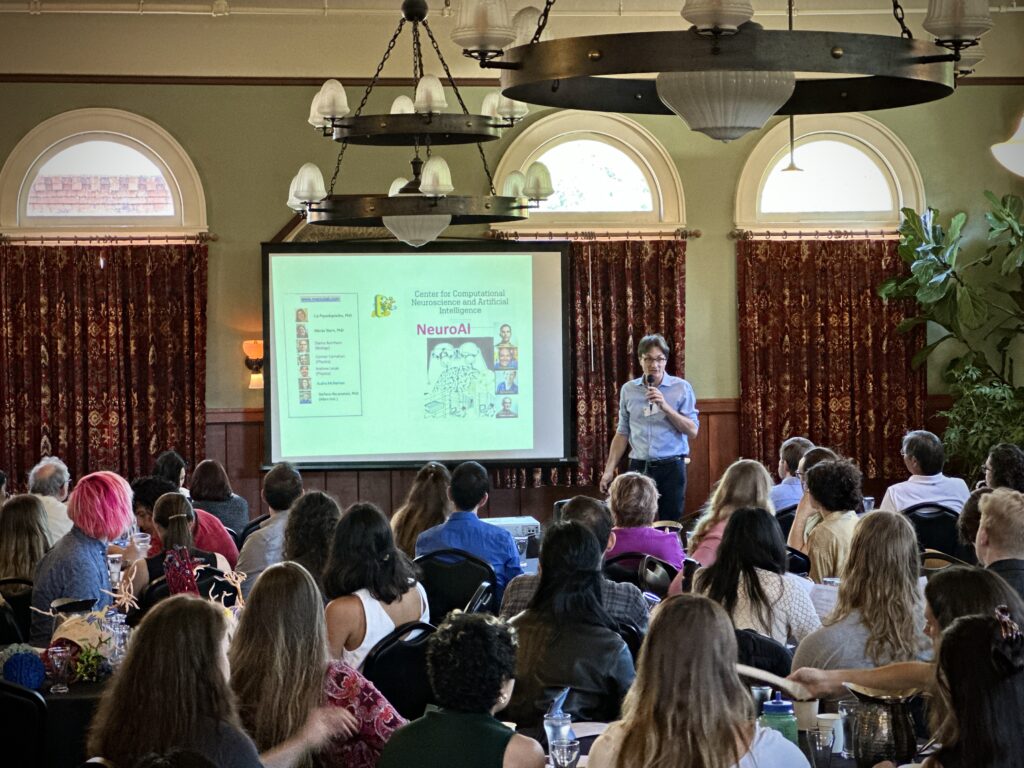
Dr. Mazzucato and Audra McNamee, a cartoonist, also collaborated on a fantastic, free, illustrated guide to legal psilocybin mushrooms in Oregon!
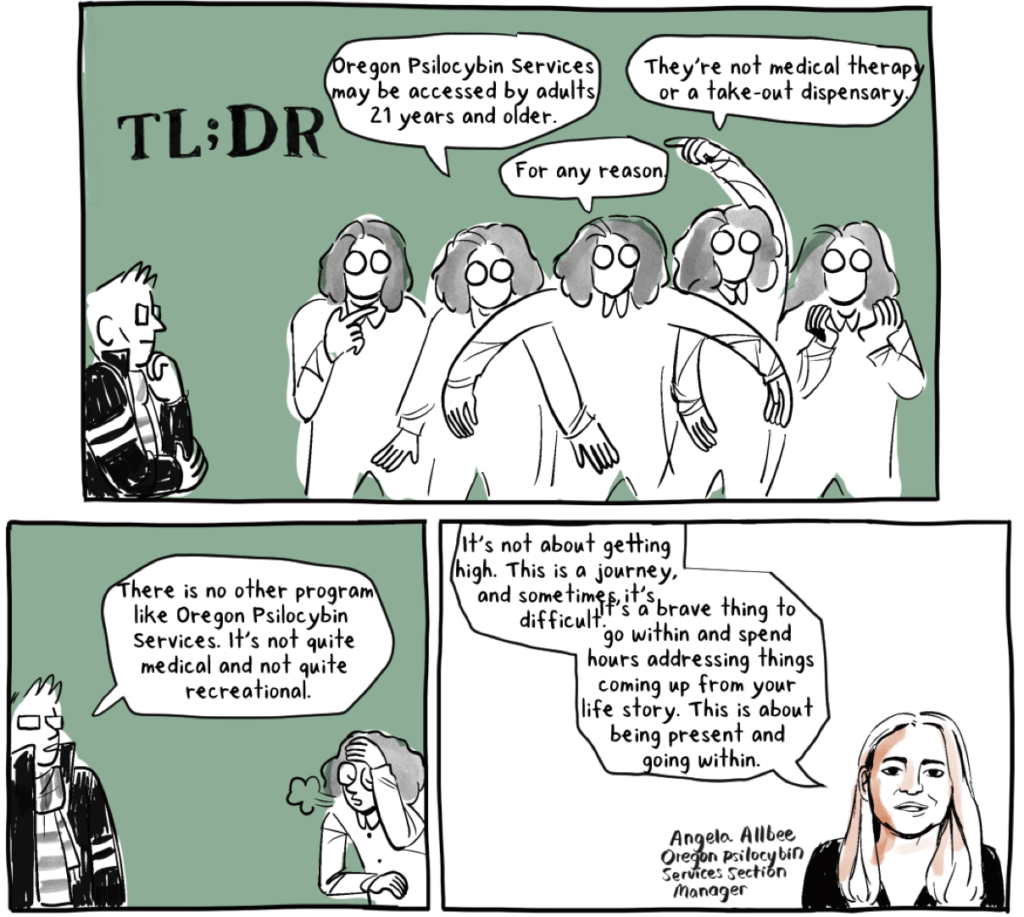
CHECK IT OUT: Legal Psilocybin Mushrooms in Oregon: A Prologue
Treating Substance Use Disorders
Dr. Christopher Stauffer, an Assistant Professor of Psychiatry at OHSU (who also presented at NogginFest in 2021!) then highlighted research on the effectiveness of psilocybin-assisted psychotherapy for treating many substance use disorders.
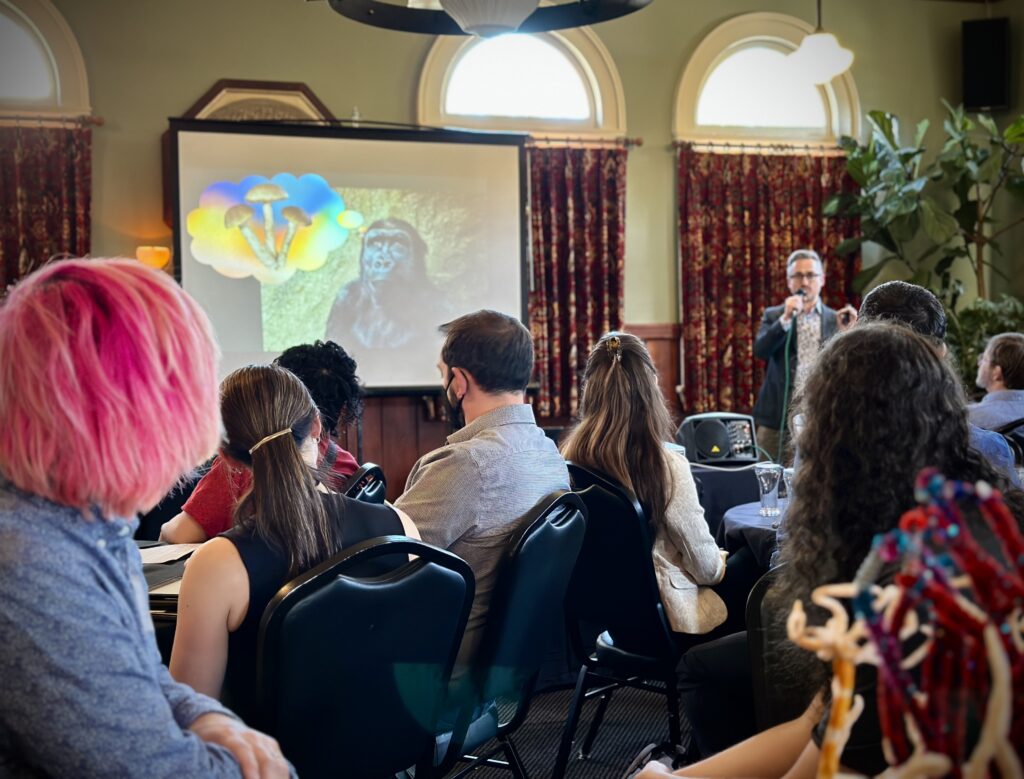
LEARN MORE: Exploring psilocybin-assisted psychotherapy in the treatment of methamphetamine use disorder
LEARN MORE: Evidence Brief: Psychedelic Medications for Mental Health and Substance Use Disorders
LEARN MORE: Psychedelic-Assisted Therapy for Substance Use Disorders and Potential Mechanisms of Action
LEARN MORE: Therapeutic effect of psilocybin in addiction: A systematic review
LEARN MORE: Psychedelics and Other Psychoplastogens for Treating Mental Illness
SfN Chapter for Oregon Youth!
One of the joys of attending the Chapter Meeting this year was arranging free entry (thanks to Kate Stout of the OHSU Brain Institute and Dr. Larry Sherman from the SfN Chapter) for Tara Subramanian, a Portland Public School senior who helped found the Oregon Youth Neuroscience Conference – a wonderful free event featuring research speakers, along with brain specimens and art projects with Northwest Noggin!
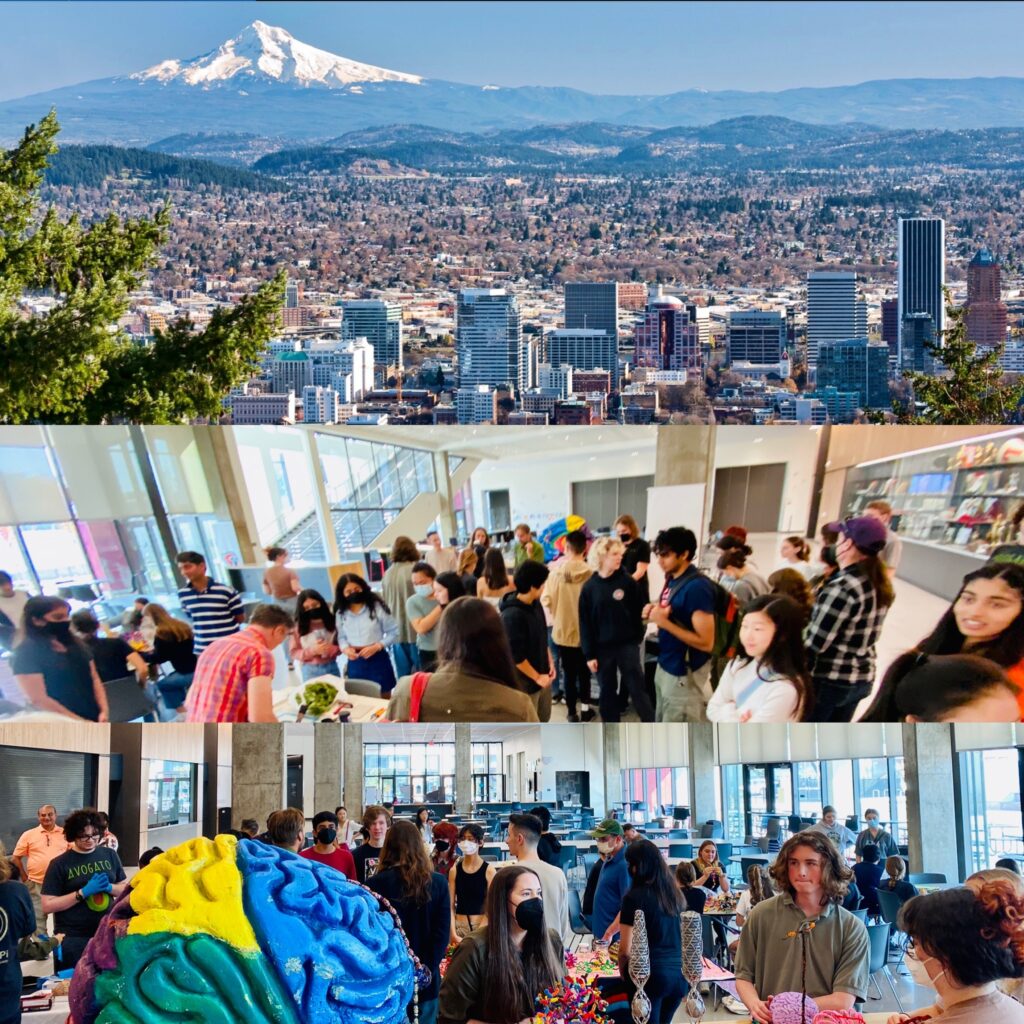
LEARN MORE: Neuroscience for Oregon Youth!
Tara presented her own poster on successful conference organizing at the Meeting!
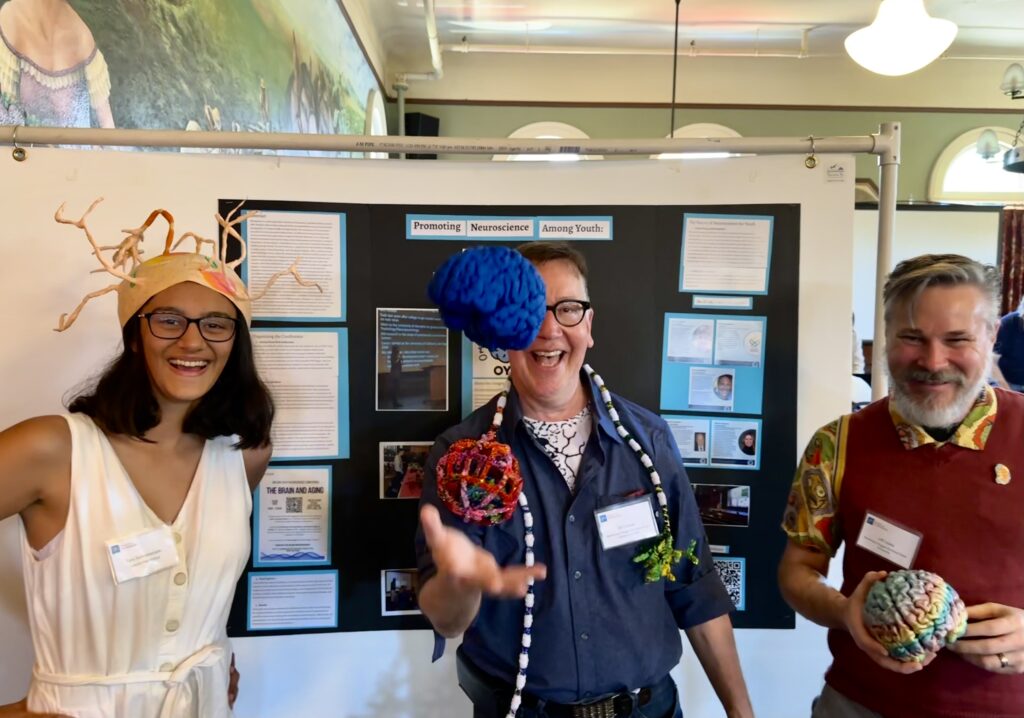
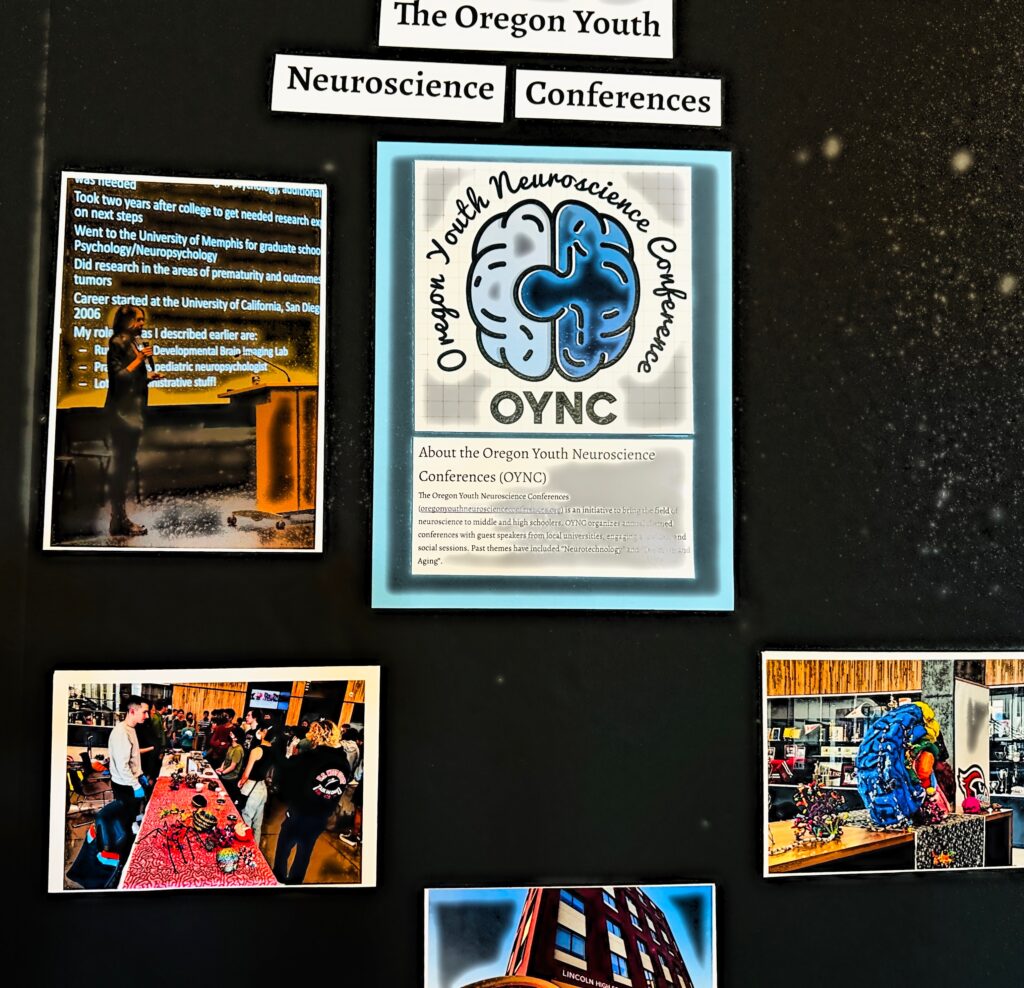
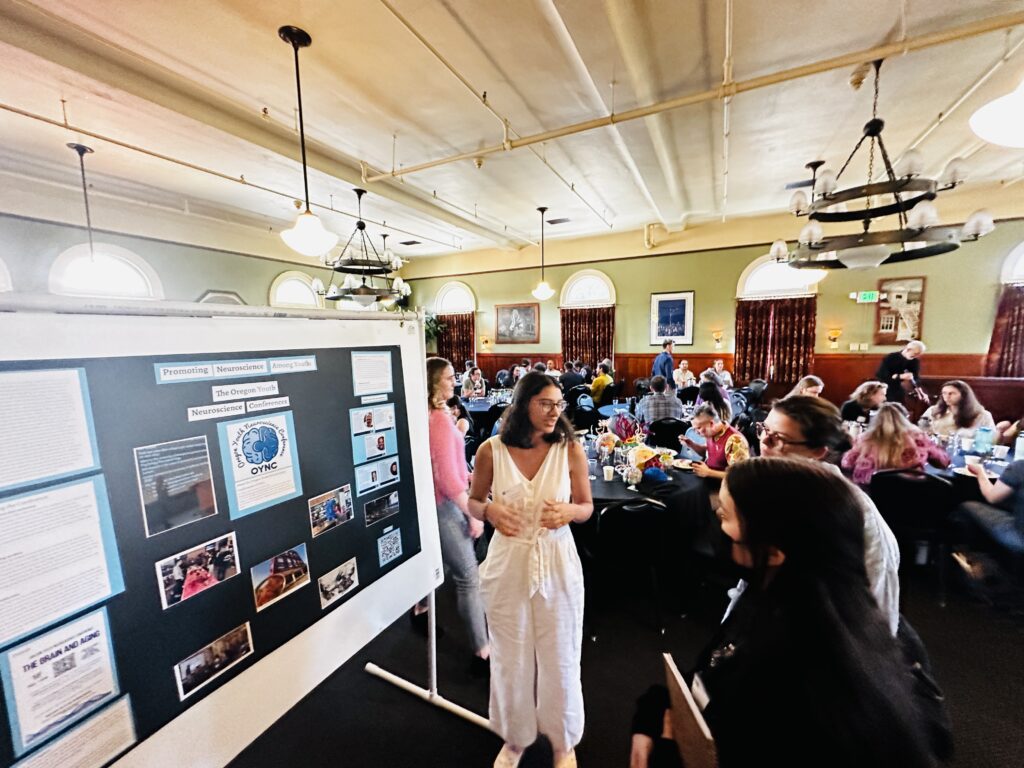
“When the nonprofit, NW Noggin, brought a team of volunteers with cadaver brains and neuroscience-themed art projects that students could learn brain anatomy from, student engagement drastically improved.”
— Tara Subramaniam
READ THE WHOLE POSTER ABSTRACT: SfN OR/SW WA Chapter Meeting!
READ ALL THE SFN CHAPTER ABSTRACTS
SCICOMM SATURDAY
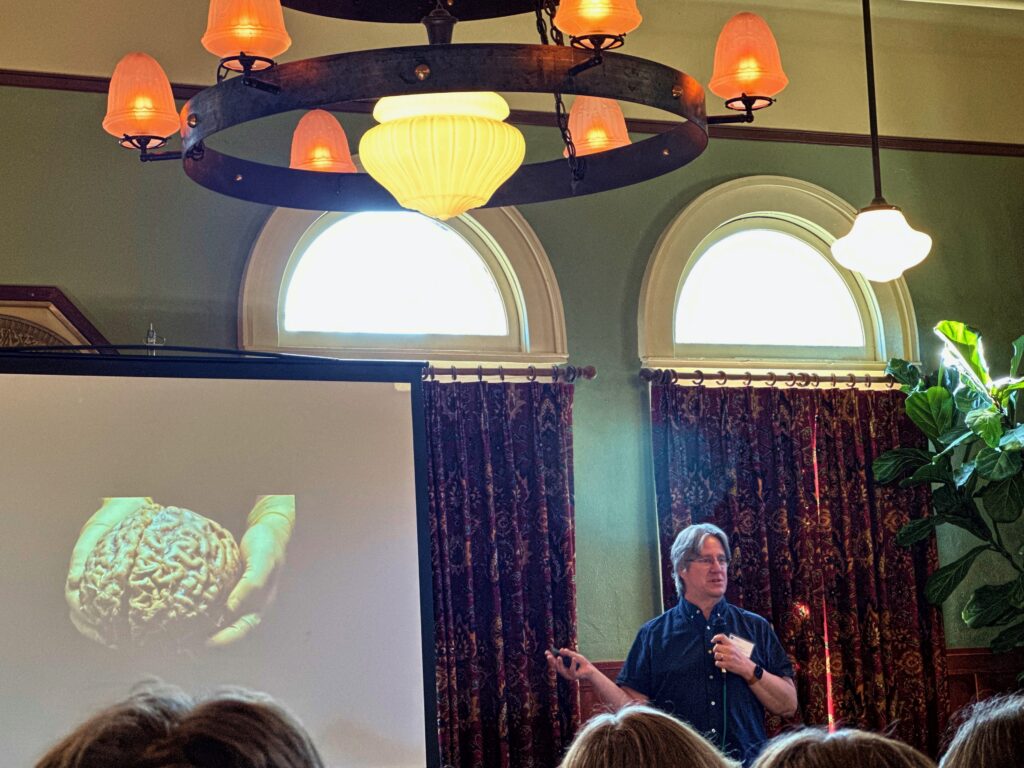
Dr. Larry Sherman, the President of the Oregon/Southwest Washington SfN Chapter, kicked off day two with a spirited and resounding call for more community engagement, clearly explaining the devastating consequences of subverting facts and evidence.

For example, he noted that U.S. states with Republican governors who ignored clear research evidence and discouraged their citizens from seeking COVID vaccinations had – unsurprisingly and tragically – significantly more COVID infections and deaths.
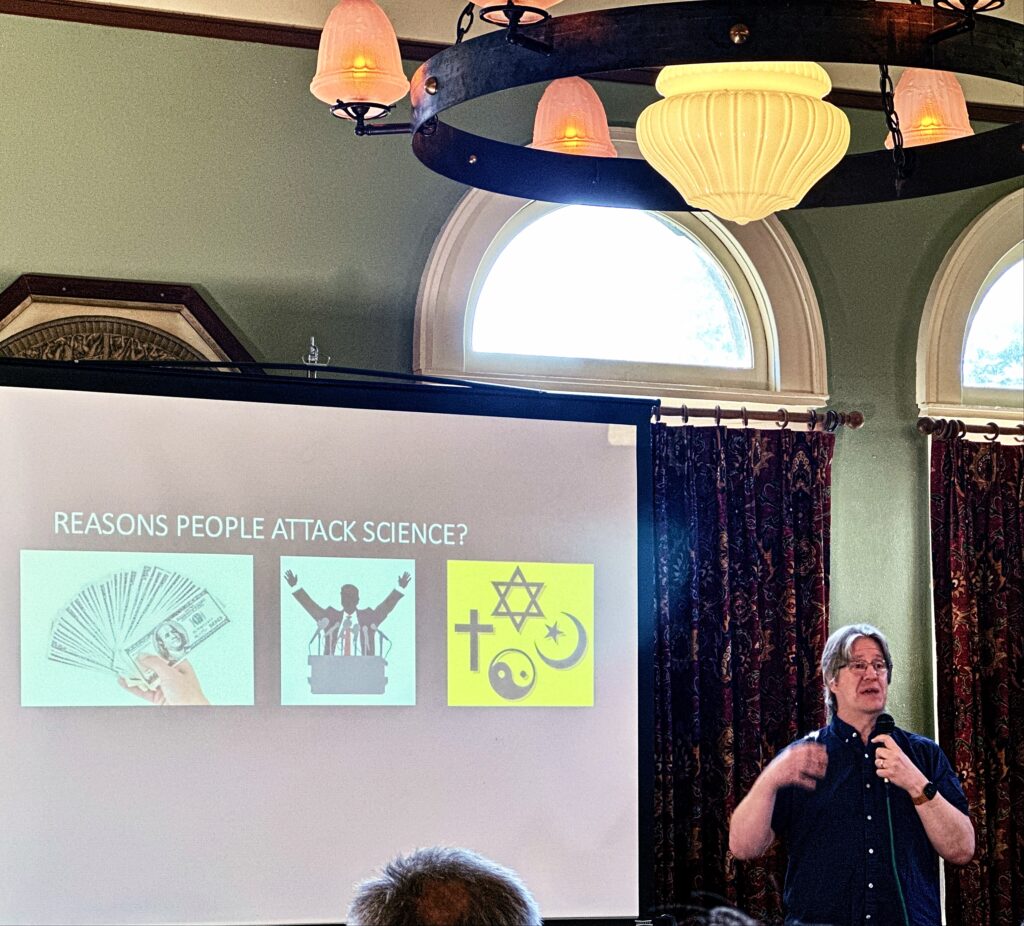
LEARN MORE: Along party Lines: Examining the gubernatorial party difference in COVID-19 mortality rates in U.S. Counties
LEARN MORE: Mounting antiscience aggression in the United States
Larry also described his own extensive outreach activities, including school visits, a TED Talk, and a compelling and accessible new book on the neuroscience of music!
LEARN MORE: Every Brain Needs Music
NORTHWEST NOGGIN POSTER
Our own poster touched on similar topics, with an emphasis on promoting brain awareness for all. So many options cited as science communication and engagement opportunities, including science museum and academic programs, require substantial admission or tuition, and primarily serve those with existing resources.
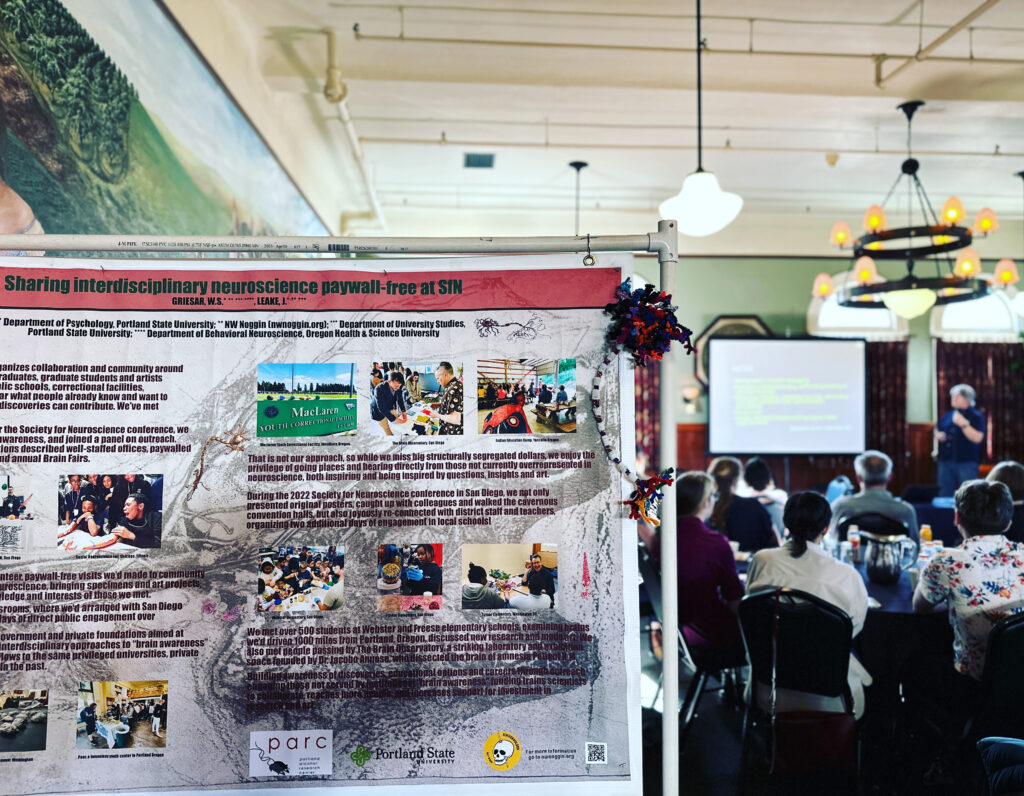
“Scientific research is a social process that occurs over time with many minds contributing. But the public has been taught that scientific insight occurs when old white guys with facial hair get hit on the head with an apple or go running out of bathtubs shouting ‘Eureka!’ That’s not how it works, and it never has been.”
— Holden Thorpe, Science
LEARN MORE: It matters who does science
Many are also presented as opportunities to meet or be judged by scientific “experts,” instead of acknowledging, welcoming and encouraging the valuable insights and contributions of those not already in the narrow realms of academia.
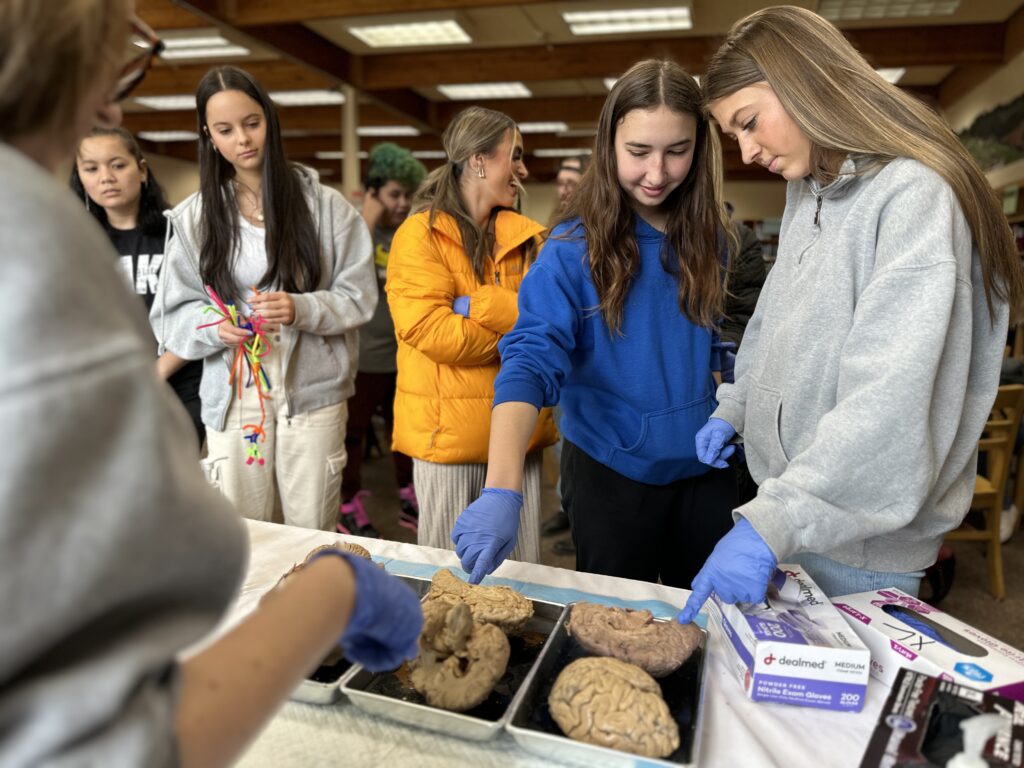
LEARN MORE: Thankful for brains
LEARN MORE: Brain awareness for ALL
LEARN MORE: Synaptic Community Connections
LEARN MORE: Brains to the Streets!
This was also abundantly clear from Dr. Gomez’s earlier call to more explicitly connect the vast indigenous knowledge of psychedelics to current research. It was also apparent in the smaller number of students able to access the SfN Chapter meeting this year, as entry cost $150, an amount too high for many to afford. Noggin outreach is free.
From the NW Noggin Poster
(Graphics and Design by Jeff Leake)
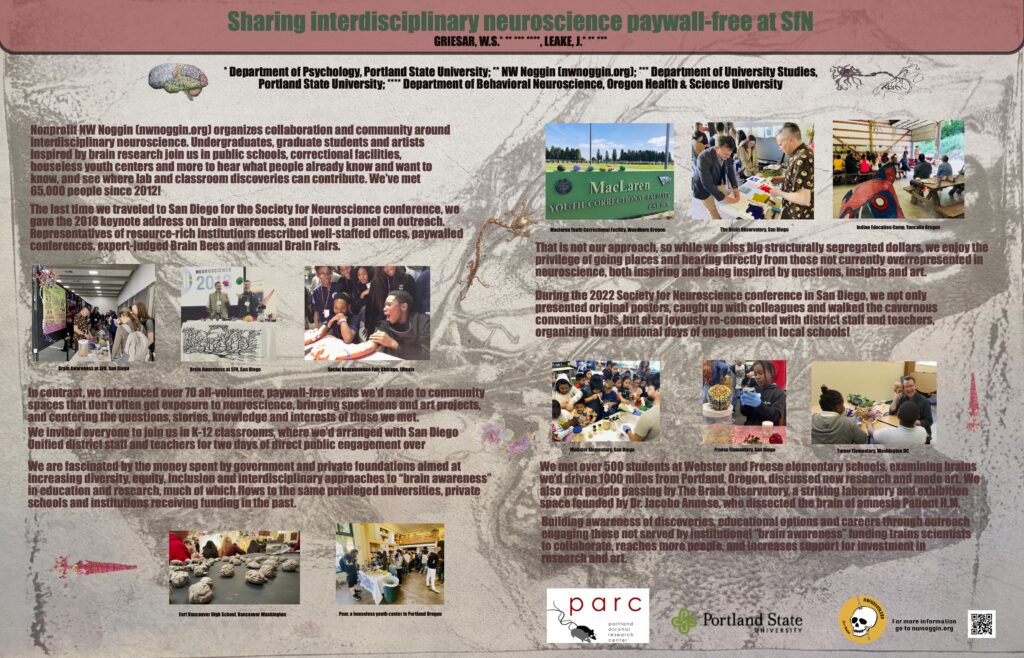
Nonprofit NW Noggin (nwnoggin.org) organizes collaboration and community around interdisciplinary neuroscience. Undergraduates, graduate students and artists inspired by brain research join us in public schools, correctional facilities, houseless youth centers and more to hear what people already know and want to know, and see where lab and classroom discoveries can contribute.
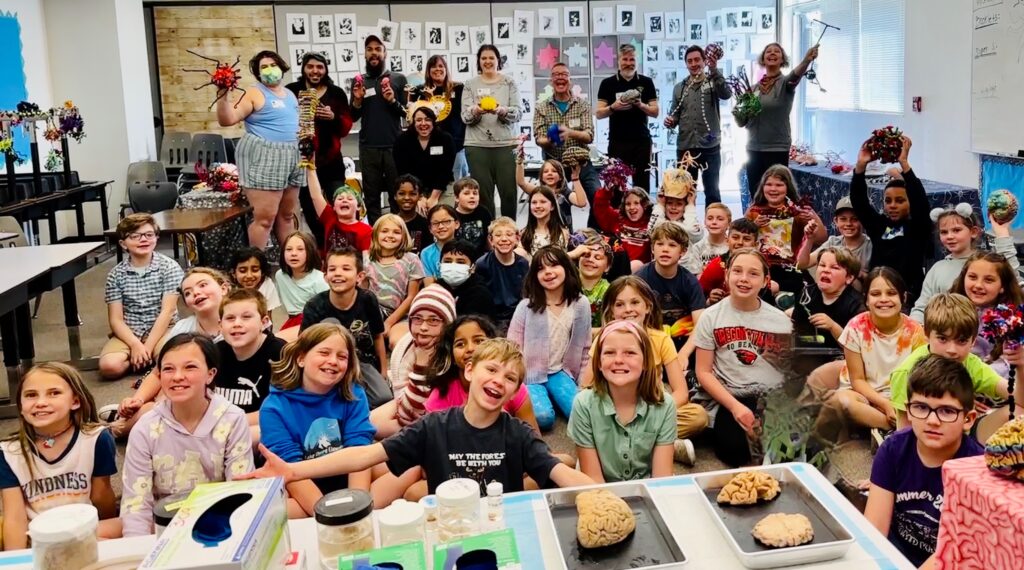
We’ve met 65,000 people since 2012!
LEARN MORE: Noggin Bloggin
The last time we traveled to San Diego for the Society for Neuroscience conference, we gave the 2018 keynote address on brain awareness, and joined a panel on outreach. Representatives of resource-rich institutions described well-staffed offices, paywalled conferences, expert-judged Brain Bees and annual Brain Fairs.
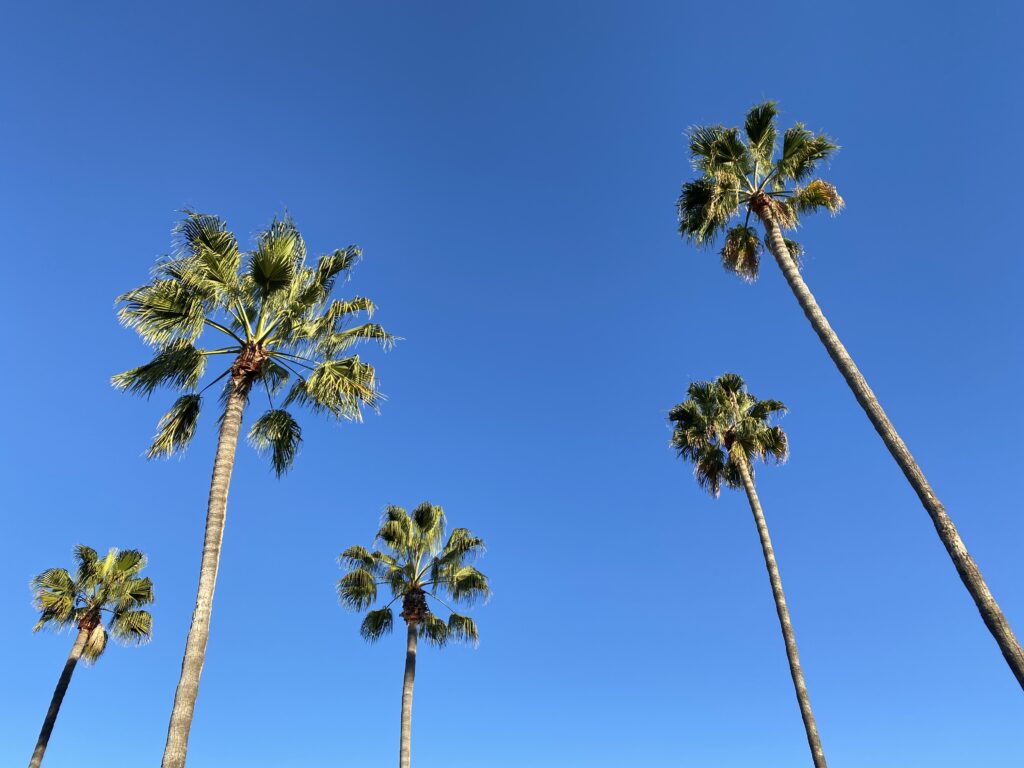
In contrast, we introduced over 70 all-volunteer, paywall-free visits we’d made to community spaces that don’t often get exposure to neuroscience, bringing specimens and art projects, and centering the questions, stories, knowledge and interests of those we met. We also invited everyone to join us in K-12 classrooms, where we’d arranged with San Diego Unified district staff and teachers for two days of direct public engagement over neuroscience and art!
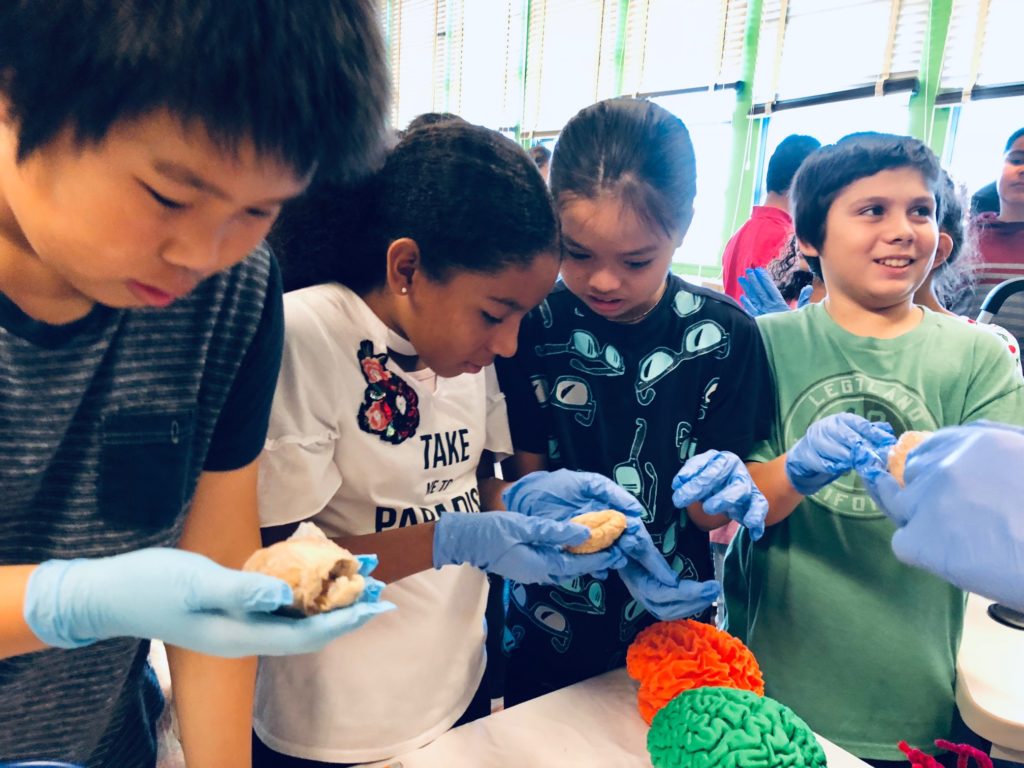
LEARN MORE: Synapsing in San Diego!
We are fascinated by the money spent by government and private foundations aimed at increasing diversity, equity, inclusion and interdisciplinary approaches to “brain awareness” in education and research, much of which flows to the same privileged universities, private schools and institutions receiving funding in the past.
That is not our approach, so while we may miss big structurally segregated dollars, we enjoy going places and hearing directly from those not currently overrepresented in neuroscience, both inspiring and being inspired by questions, insights and art.
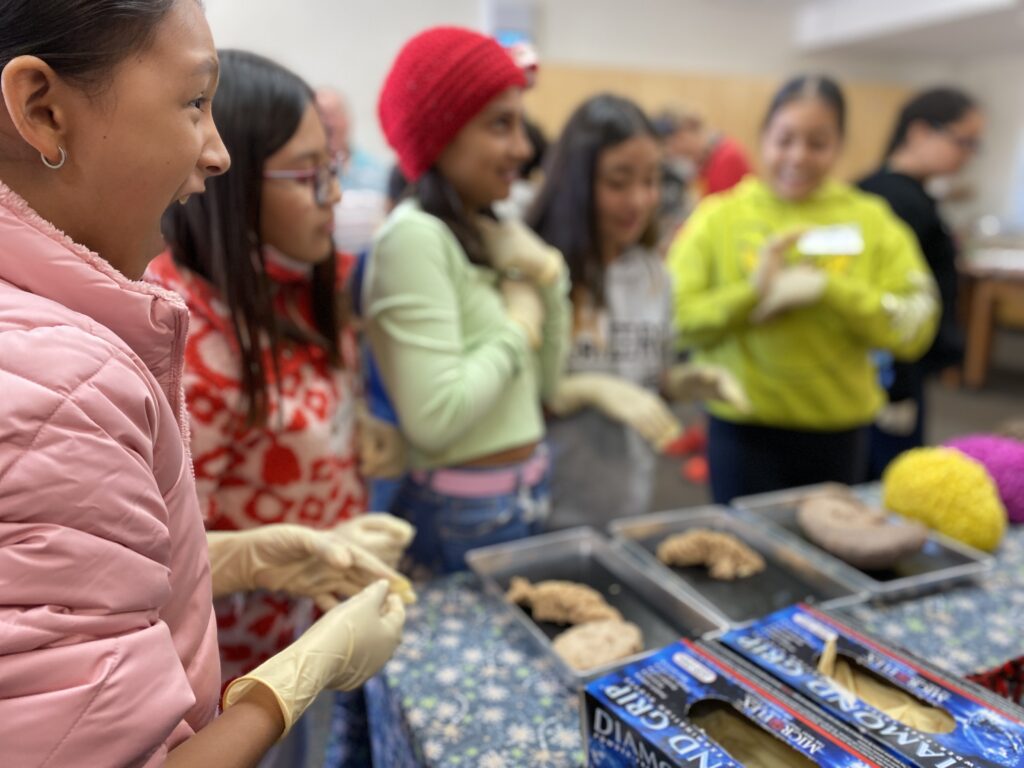
During the 2022 Society for Neuroscience conference in San Diego, we not only presented original posters, caught up with colleagues and walked the cavernous convention halls, but also joyously re-connected with district staff and teachers, organizing two additional days of engagement in local schools!
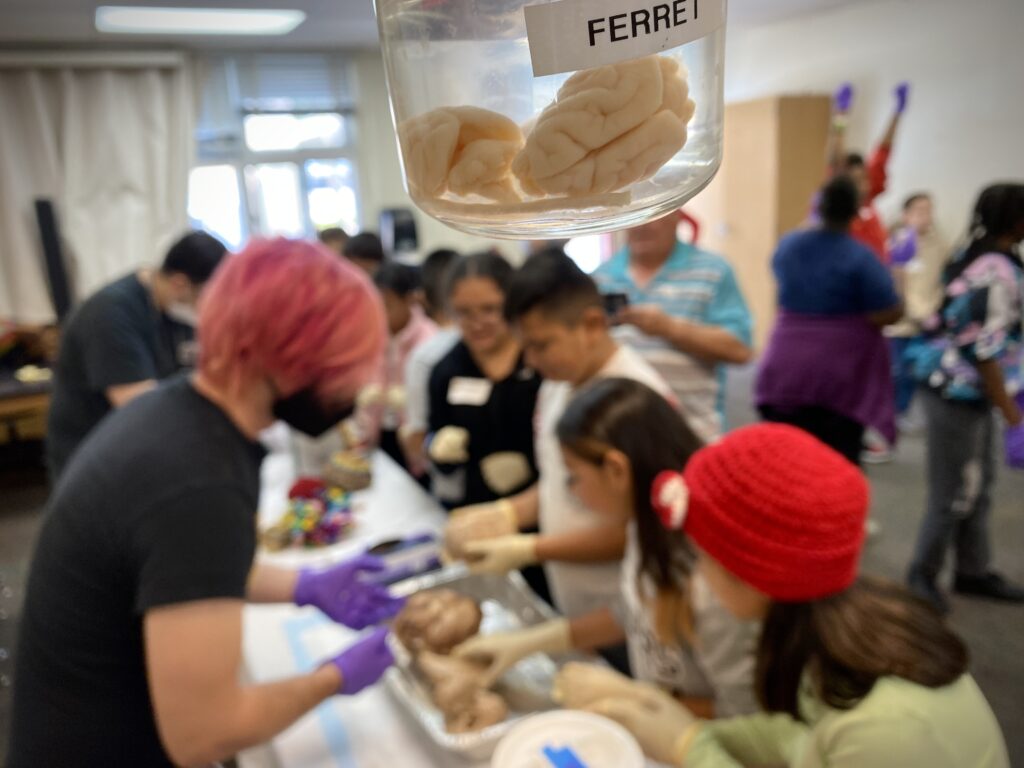
We met over 500 students at Webster and Freese elementary schools, examining brains we’d driven 1000 miles from Portland, Oregon, discussed new research and made art. We also met people passing by The Brain Observatory, a striking laboratory and exhibition space founded by Dr. Jacobo Annese, who dissected the brain of amnesia Patient H.M.

Building awareness of discoveries, educational options and careers through outreach engaging those not served by institutional “brain awareness” funding trains scientists to collaborate, reaches more people, and increases support for investment in research and art.
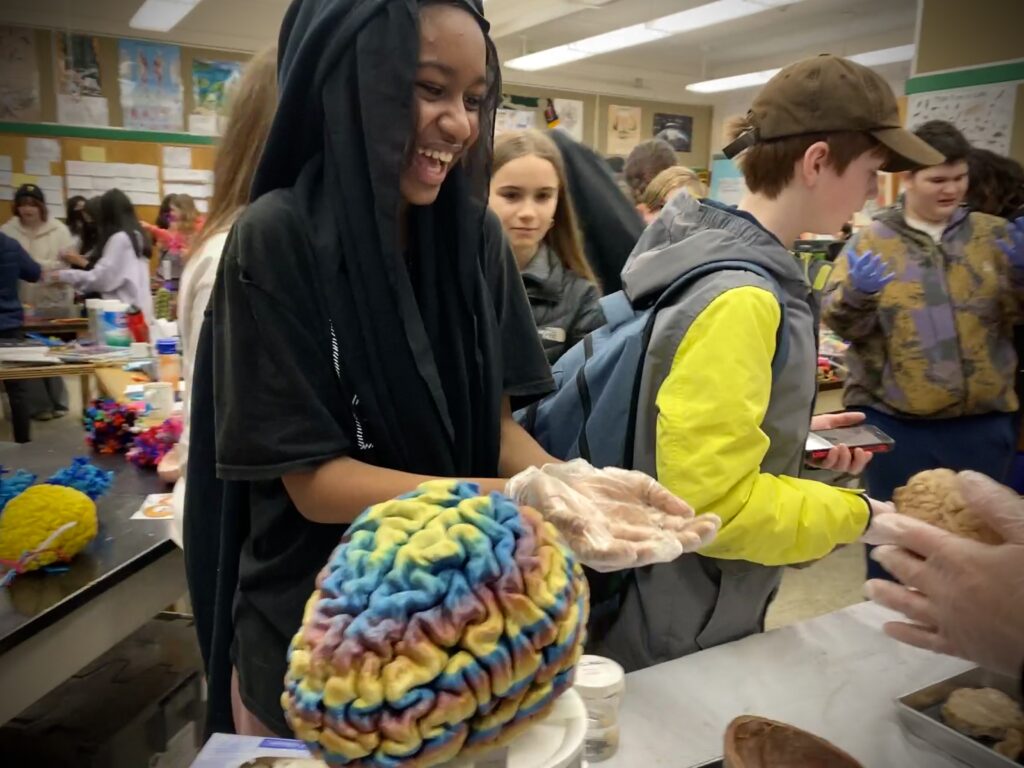
DOWNLOAD OUR NOGGIN POSTER PDF: SFN poster 2023
Brains Beyond SfN
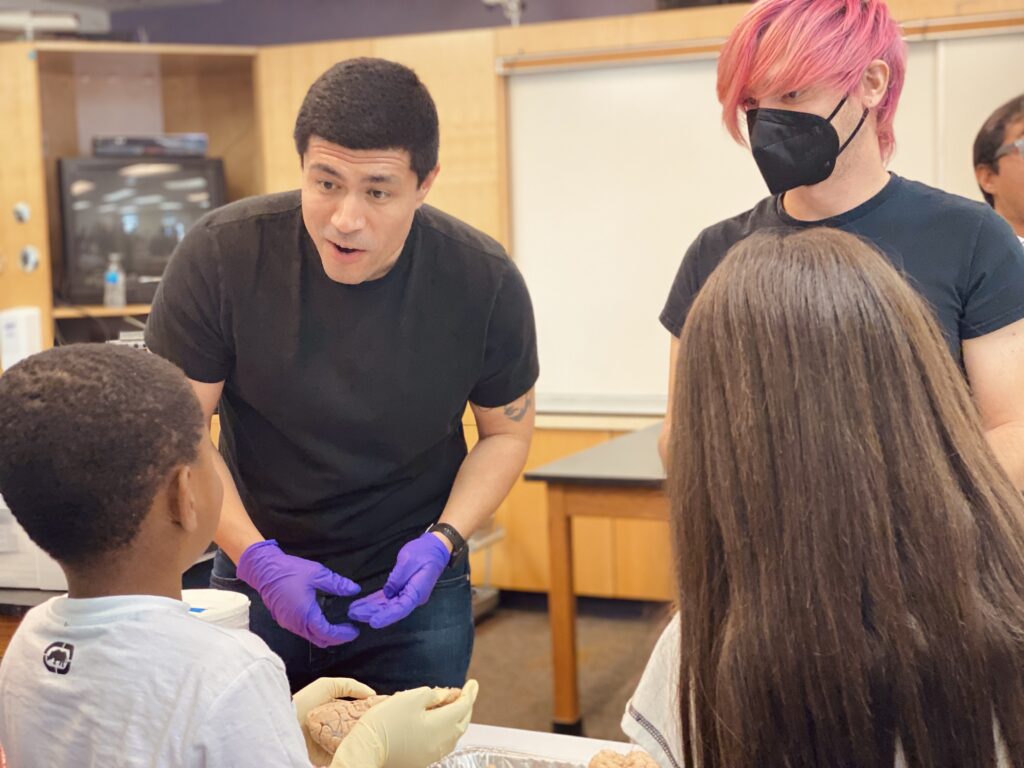
Observing Art & Brains @ SfN
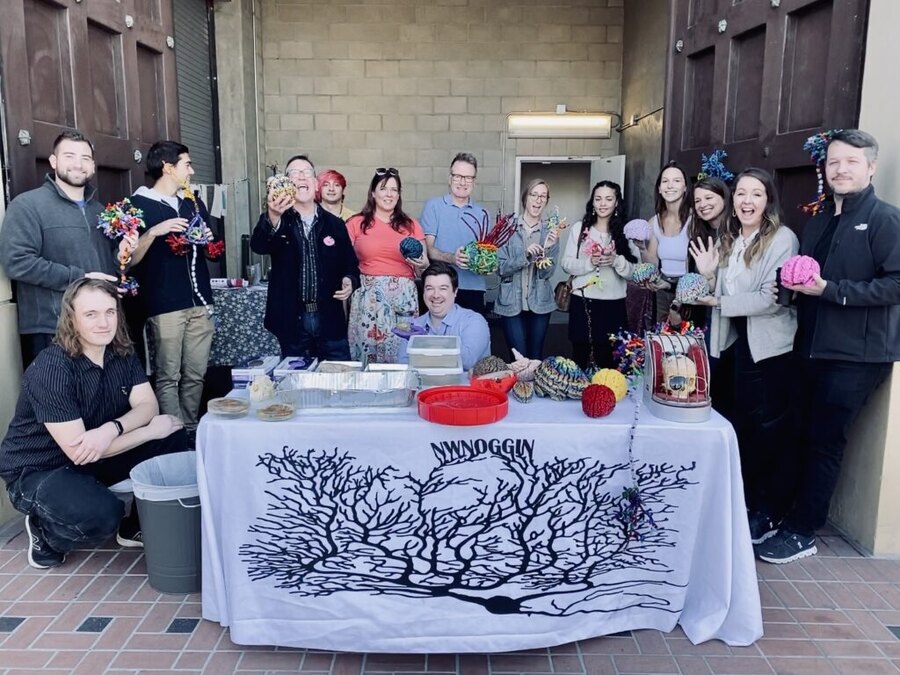
Huge thanks to Kate Stout and Dr. Larry Sherman for a welcome return to Edgefield!



